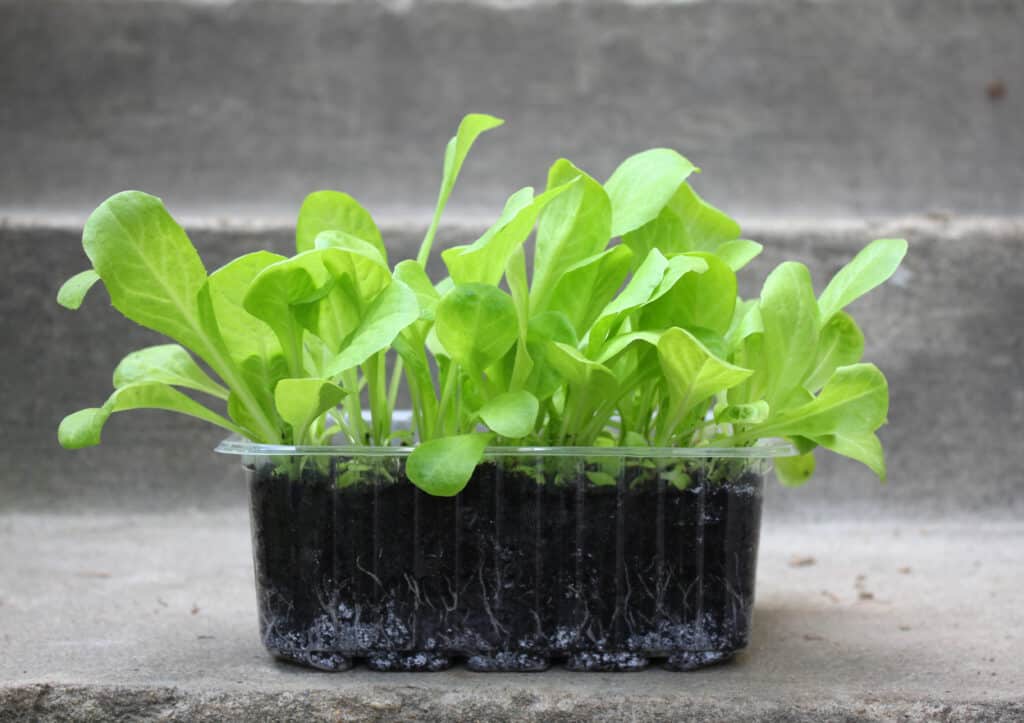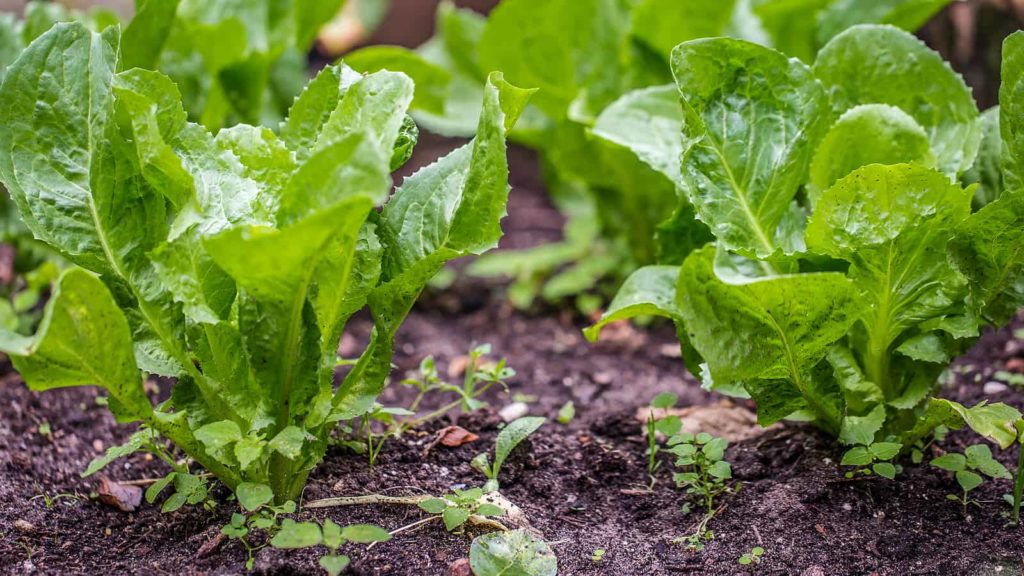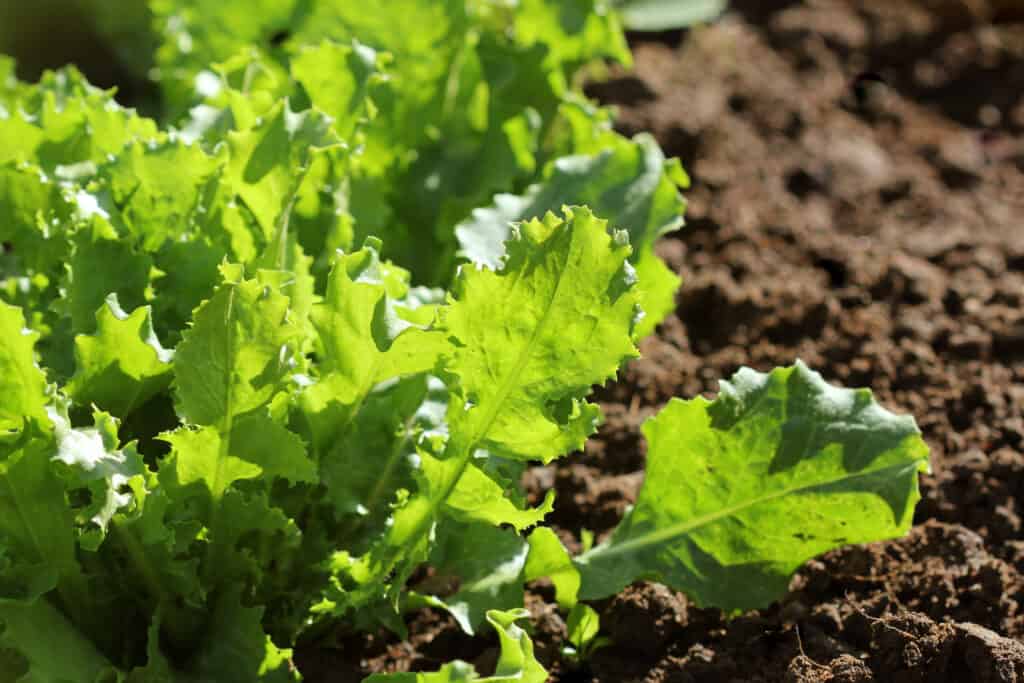Endive and escarole are cool-season crops. They can be grown in early spring and in fall.
Sow endive and escarole seeds directly in the garden 2 to 4 weeks before the last frost in spring. To set out transplants start seeds indoors 4 to 5 weeks before transplanting. Set transplants in the garden 4 weeks before to 2 weeks after the last frost. Transplants will give you a head start on the season.
Make succession plantings every 2 to 3 weeks until temperatures begin to warm in late spring. Endive is hardier than escarole; it can be planted in late winter under a plastic tunnel for early spring harvesting.
Good Products for Growing Endive at Amazon:
- Garden Safe Snail and Slug Bait
- Bonide Sulfur Fungicide
- Monterey BT Caterpillar Killer
- Neem Bliss 100-% Cold Pressed Neem Oil
- Safer Brand Insect Killing Soap
- PyGanic Botanical Insecticide
Grow endive and escarole in moisture-retentive, humus-rich soil. If temperatures warm you can mulch them with aged compost to keep the plants from bolting.
For tender leaves at harvest, blanch the heads 2 to 3 weeks before harvest. Blanch endive and escarole by gathering the outer leaves together at the top and tying them with a strong.

Endive and escarole are different forms of the same plant. Escarole is broad-leaved with smooth margins and a mild flavor. Endive has frilly-cut leaves and a bitter flavor.
Planting for fall and winter harvest may be the best course unless you get an early start by sowing seed in late winter for spring harvest. Endive and escarole that come to harvest as the weather warms at the end of spring and in summer can be tough and bitter tasting. Hot weather will trigger bolting and seed-stalk formation. Bolting can be slowed but not stopped by picking the oldest leaves first.
Endive and escarole mature in 85 to 98 days depending on the variety.
Endive and escarole planting details
- Sowing depth: ¼ inch (.6 cm)
- Space between plants after thinning: 15-18 inches (38-45cm)
- Days to sprout: 10-14
- Days to harvest: 80-100; about 30 days after transplanting, you can begin picking leaves as you need them.
- Storage period: 1-2 weeks
- Seeds per 100-row feet: ¼ ounce (7 grams)
- Yield per 100-row feet: 100 heads
- Suggested varieties: Full Heart Batavian, Green Curled, Salad King

Endive and escarole sowing and planting tips
- Endive and escarole seeds are viable for 6 years.
- Endive and escarole can be grown from seeds or transplants.
- Start plants indoors 8 weeks before the last frost or direct sow into the garden as soon as the soil can be worked—usually about 4 weeks before the last frost in spring.
- The optimal growing air temperature is 50°-75°F (10-24°C).
- Sow seed ¼ inch (6 mm) deep.
- Sow seeds 1 to 2 inches (2.5-5 cm) apart; later thin seedlings to 6 to 9 inches (15-23 cm) apart.
- Seed germinates in 19 to 14 days at or near 70°F (21°C)—but sometimes seed can take up to 2 weeks to germinate if the soil is cold.
- Keep the soil evenly moist until seeds germinate then keep the soil moist until seedlings are well established.
- For intensive planting space plant 10 inches (25 cm) apart in a staggered pattern.
- Make sure there is good air circulation around maturing plants to avoid disease.
- Endive and escarole grow best in full sun but can tolerate light shade.
- Endive and escarole prefer a soil pH between 6.0 and 6.8.
- Add aged compost to planting beds in advance of sowing; compost will feed the soil and aid moisture retention.
- Avoid planting endive and escarole where radicchio has recently grown.
- Make successive sowings every few weeks for an extended harvest.
- Fertilize with an organic fertilizer such as fish emulsion at half strength.
- Aphids, flea beetle, leafhoppers, snails, and slugs can attack endive and escarole.
More tips at How to Grow Endive and Escarole.
Interplanting: Interplant with non-heading lettuce, radishes, turnips, and parsnips.
Container Growing: Grow one plant in a 6-inch (15 cm) pot or grow more than one spaced 10 inches apart in a large container.
Endive and escarole planting calendar
For spring harvest:
- 10-12 weeks before the last frost in spring: direct-sow seeds in a plastic tunnel or cold frame for late spring harvest.
- 6-8 weeks before the last frost in spring start seeds indoors for transplanting out later.
- 2-4 weeks before the last frost in spring: direct sow in the garden; minimum soil temperature should be 45°
- Every 2 weeks from spring to early summer sow succession crops.
For mid-to-late fall and winter harvest:
- 10-8 weeks before the first frost in fall: direct-sow seed in the garden.
- 8-6 weeks before the first frost in fall: direct sow in a plastic tunnel or cold frame for harvest in winter.

Endive and escarole seed sowing dates
(These dates are for the Northern Hemisphere)
| Average date of the last frost | Planting dates |
| Jan. 30 | Jan. 1-Mar. 1 |
| Feb. 8 | Jan. 1-Mar. 1 |
| Feb. 18 | Jan. 15-Mar. 1 |
| Feb. 28 | Feb. 1-Mar. 1 |
| Mar. 10 | Feb. 15-Mar. 15 |
| Mar. 20 | Mar. 1-Apr. 1 |
| Mar. 30 | Mar. 10-Apr. 10 |
| Apr. 10 | Mar. 15-Apr. 15 |
| Apr. 20 | Mar. 25-Apr. 15 |
| Apr. 30 | Apr. 1-May 1 |
| May 10 | Apr. 15-May 15 |
| May 20 | May 1-30 |
| May 30 | May 1-30 |
| June 10 | May 15-June 1 |
Recommended endive and escarole varieties
- Endive type: ‘Green Curled’, ‘Frizz E’, ‘Neos’—all with frilly leaves; ‘Rhodos’ is mild flavor.
- Escarole type, ‘Batavaian Full-Heart’; ‘Broad-leaved Batavian’; ‘Coral’ thick, broad leaves; ‘Sinco’ crisp, good flavor; ‘Taglio’ tolerates warm weather, good flavor.
Botanical Name: Cichorium endivia
Endive and escarole belong to the Compositae (Asteraceae) or sunflower family.
More at:
How to Plant and Grow Endive and Escarole
How to Harvest and Store Endive and Escarole
Related articles:
How to Plant and Grow Endive and Escarole
Edive and Escarole Seed Starting Tips
How to Harvest and Store Endive and Escarole
Escarole and Curly Endive Serving Tips
How to Grow Chicory and Belgian Endive
How to Cook and Serve Belgian Endive
How to Plant and Grow Radicchio
How to Harvest and Store Radicchio
Four Ways to Cook and Serve Radicchio
Garden Planning Books at Amazon:
- Vegetable Garden Grower’s Guide
- Tomato Grower’s Answer Book
- Vegetable Garden Almanac & Planner
- Kitchen Garden Grower’s Guide Vegetable Encyclopedia















